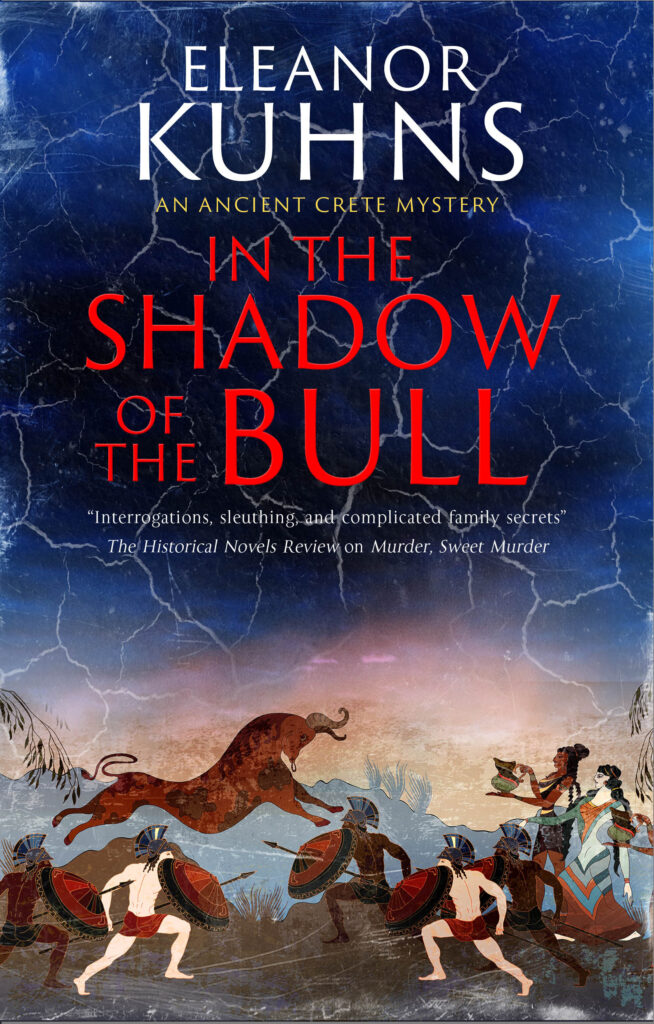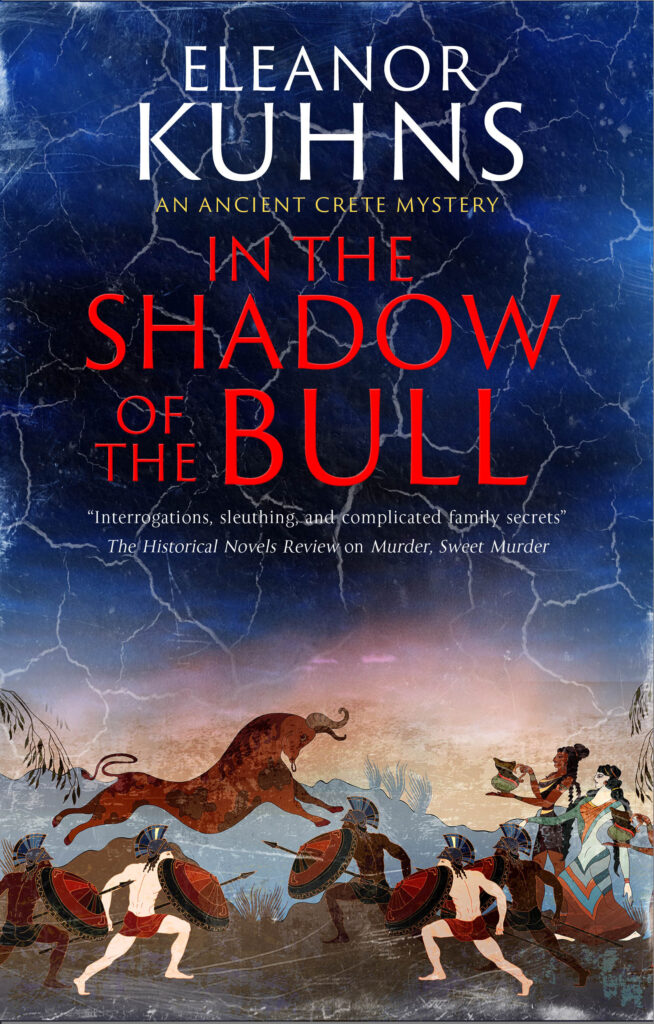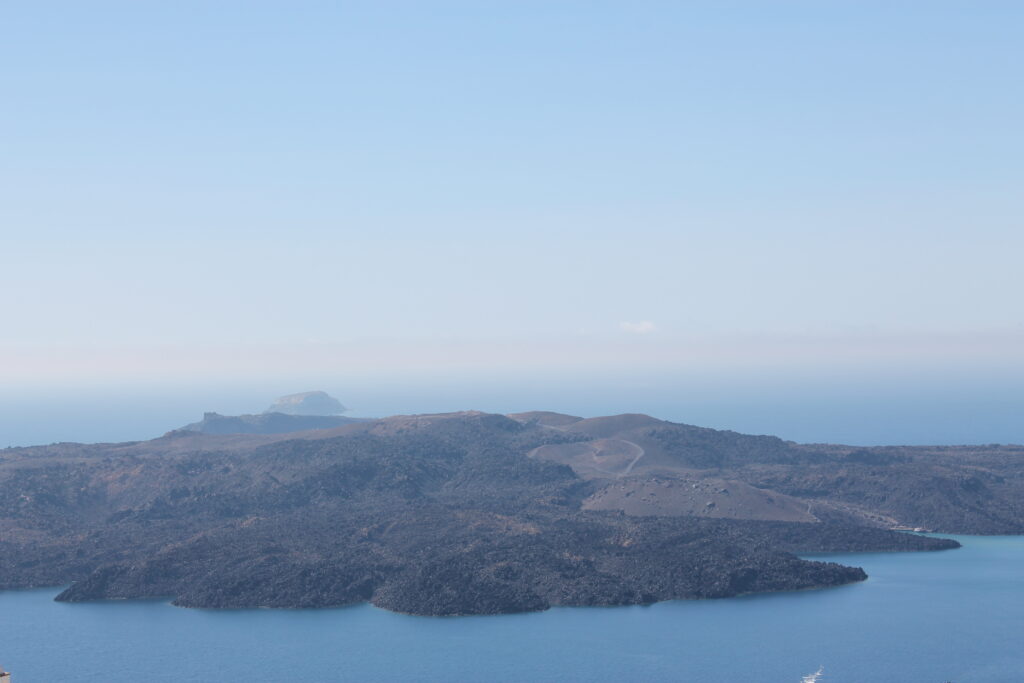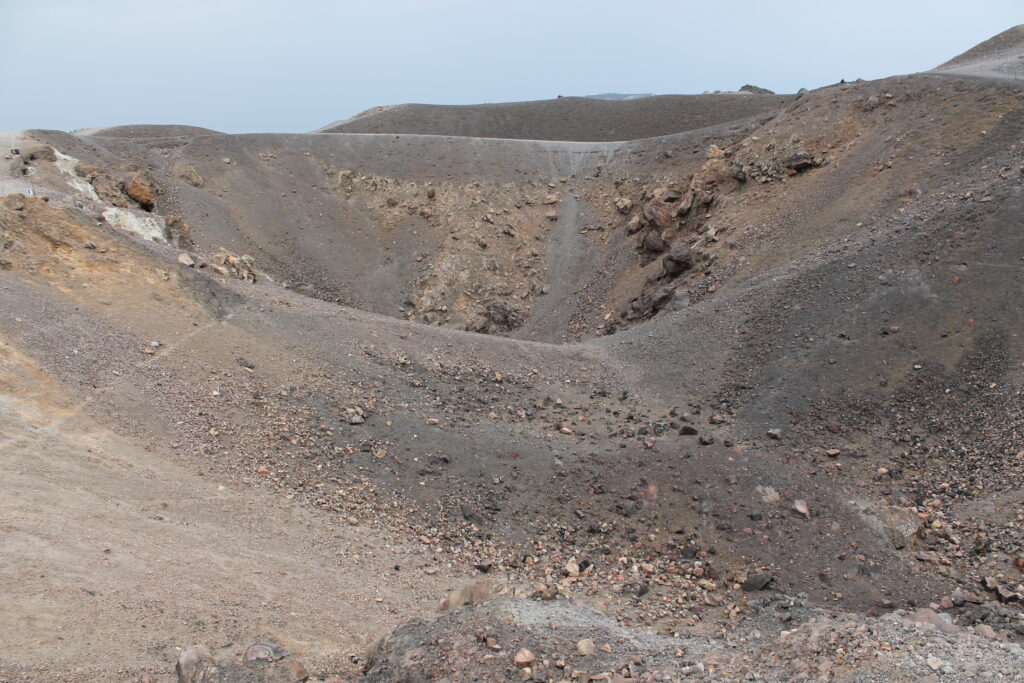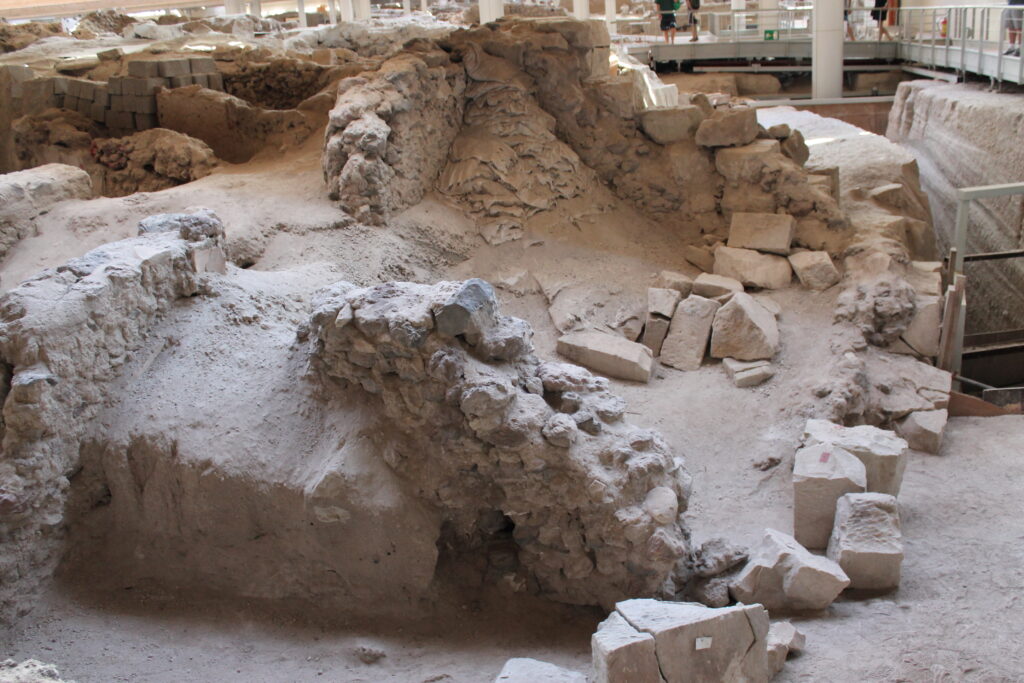What do we know about the cosmetics used by the women in Ancient Crete and the clothing they wore? Because we have no written records, archaeologists (and writers like me) are forced to rely on interpretations of murals, statuary and other art work.
Cosmetics were commonly used in the Ancient World: Egypt, the Middle Ages, and Asia. In Egypt and Mesopotamia, they were used by both men and women and all classes. Kohl was the most commonly used cosmetic. Kohl was made from galena, a dark gray ore and crushed charcoal, mixed with gum or water to make a paste. Cosmetics were so important cosmetic palettes were found buried in gold with the deceased’s grave goods.
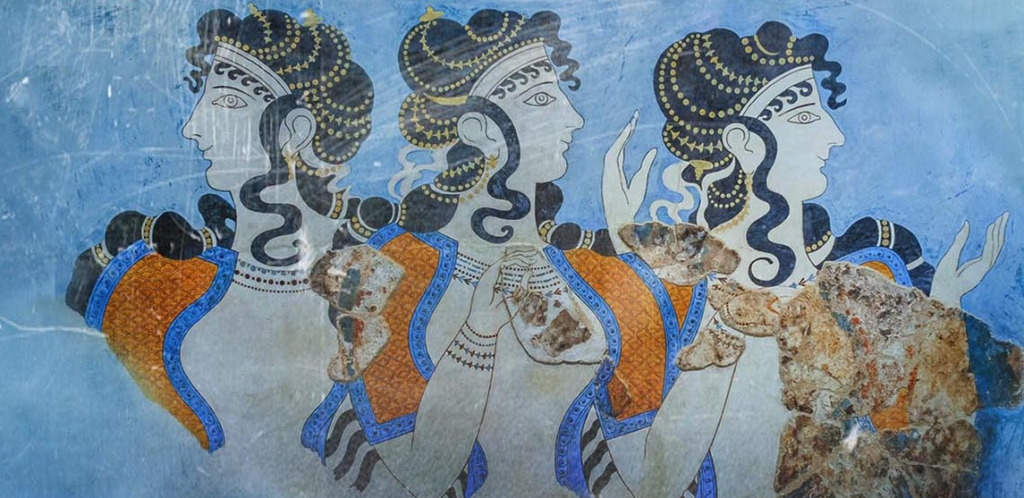
Kohl was used for lining the eyes, like modern eyeliner. It offered health benefits in the form of protection from disease, bugs and sun rays. Red ochre clay was ground up and mixed with water to create a paste to paint on the lips and cheeks.
The murals also show the hairstyle fashionable at that time. Locks of hair were brought over the front of the shoulders. Most of the hair was drawn back from the forehead and decorated with pearls, gold beads or gems. Both sexes wore their hair in this manner.
Note in the graphic above the white ribbon at the back of the women’s necks. This was a sacral knot worn by the priestesses.
Finally, the murals and statuary depict a certain style of dress. All the women wear long skirts, usually ruffled or arranged in tiers, with a short short-sleeved jacket. Opinions vary about what women wore under the jacket. Were they nude or did they wear a blouse? It is difficult to tell from the artifacts available to us.
Below, a statue of a goddess or priestess holding snakes.
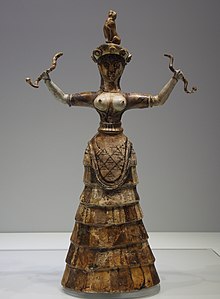
Minoan statue
Notice the elaborate belt around her wasp waist. Apparently, tiny waists were also the fashion and tight belts were worn to accentuate it. These wasp waists and tight belts were worn by men as well as by women.
This is the setting I use for In The Shadow of the Bull, a mystery set in Bronze Age Crete. Martis’s preference for more comfortable clothing, and only a loincloth when she is bull leaping, is frequently mentioned. As she grows up, she too adopts the tiered skirt with its tight belt and the short-sleeved jacket.

